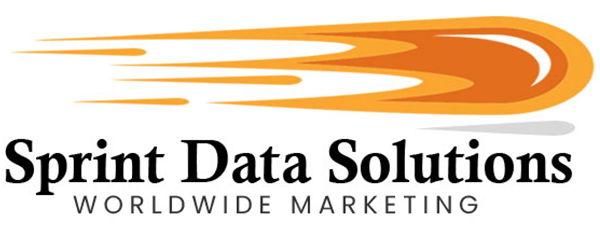Insurance Becomes More Important In Times Of Volatility
The concept of insurance has long been the cornerstone of financial protection, built on the wise principle: “It’s better to have it and not need it than to need it and not have it.” Whether for individuals or businesses, unexpected accidents, losses, or disasters can carry significant financial burdens—ones that many may not be able to absorb on their own. Insurance steps in as a vital safety net, converting consistent monthly premiums into a resource pool that can cushion the financial blow of unexpected events when they occur.
Insurance coverage spans across life, health, property, vehicles, liability, and even specialized risks, and while some policies are elective, others are mandated by law. In the United States, for example, nearly all states require auto insurance as a condition for legally operating a motor vehicle. For homeowners with mortgages, lenders often mandate home insurance. Even for businesses, various forms of liability and property insurance are legally required or strongly encouraged depending on the industry. This legal framework reinforces insurance as not just a choice—but in many cases, a critical responsibility.
Yet despite its importance, insurance often remains underappreciated or misunderstood by the average consumer. It can feel like an intangible monthly expense with no immediate benefit—until disaster strikes. When it does, having a robust insurance policy can make the difference between a manageable setback and a financial collapse. That’s why clear, consumer-focused insurance marketing is not just important—it’s essential. Most Americans, like eating vegetables, understand the value of insurance in theory, but need extra motivation and education to take real action.
Effective insurance marketing goes beyond generic reassurances. It should demonstrate real-world scenarios, compare policy benefits, and even expose gaps in typical coverage plans that consumers or business managers might overlook. When messaging is educational, transparent, and solution-driven, it can convert passive awareness into meaningful engagement. By showing how insurance protects not just assets—but families, futures, and livelihoods—marketers can build trust and encourage smart, proactive decisions.
In a world of growing uncertainty and evolving risks, the right insurance policy doesn’t just offer financial protection—it provides peace of mind. And in today’s crowded market, strategic marketing can be the key factor in helping individuals and businesses choose the protection that truly meets their needs.

Who Benefits?
There is a broad spectrum of insurance options available to meet the diverse needs of both individual consumers and businesses across the United States. Each type of insurance serves a specific purpose, helping to protect against different forms of financial risk, liability, or unexpected loss. With the right approach, insurance providers can strategically target various sectors and demographics, offering tailored solutions that align with unique life stages, industries, and risk profiles.
Just a few of the many areas where insurance can be more precisely marketed and effectively positioned include:
Health Insurance
Health insurance remains one of the most critical and emotionally charged types of coverage in the minds of the American public. In a country renowned for its cutting-edge medical technologies, innovative treatments, and world-class healthcare facilities, the unfortunate truth is that access to such care often comes with an overwhelming price tag. For millions of Americans—particularly those without employer-sponsored benefits or who are self-employed, underemployed, or between jobs—the cost of necessary medical care can be devastating, leading to insurmountable debt or the painful decision to forego life-saving treatment altogether.
Medical expenses remain one of the leading causes of personal bankruptcy in the United States, and even for those who are insured, high deductibles, limited networks, and surprise billing can still pose serious financial threats. As a result, the search for affordable, comprehensive, and transparent health insurance options continues to be a top priority for individuals and families nationwide.
While the Affordable Care Act (ACA) made significant strides in increasing healthcare access, many Americans still find ACA marketplace plans lacking—whether due to high monthly premiums, limited provider networks, or confusing tier structures. This has created fertile ground for insurance providers who can offer alternative solutions, such as short-term medical plans, health-sharing programs, supplemental coverage, or employer group options for small businesses. These alternatives, when presented clearly and ethically, are generating increasing interest, particularly among gig economy workers, retirees under 65, small business owners, and younger individuals seeking catastrophic coverage.
In today’s healthcare climate, those who can provide health insurance options that combine affordability, flexibility, and real-world coverage value are not only meeting a market demand—they are delivering peace of mind in an era where medical emergencies can threaten more than just health. For insurance marketers, communicating these benefits effectively can make all the difference in building consumer trust, driving conversions, and improving lives.
Medicare Part B
As a key complement to traditional health insurance, Medicare Part B plays a vital role in the healthcare landscape for seniors and individuals with qualifying disabilities. While many people focus on high-cost medical events—such as surgeries, hospitalizations, or cancer treatments—the everyday healthcare expenses that Medicare Part B helps cover are just as important and often overlooked. These include routine doctor visits, preventive screenings, outpatient procedures, lab tests, durable medical equipment (DME) like wheelchairs and oxygen tanks, and even mental health services and ambulance transportation in emergencies.
For individuals entering retirement or transitioning to Medicare, understanding the limitations of Medicare Part A (hospital insurance) often creates a sense of urgency to explore additional coverage. Medicare Part B fills a critical gap, covering the services and supplies necessary for managing chronic conditions, maintaining quality of life, and accessing ongoing outpatient care that isn’t addressed under Part A alone.
What’s more, the rising cost of co-pays, deductibles, and uncovered services under Original Medicare has made supplemental policies and Part B-specific insurance plans more relevant than ever. Mobility aids, diabetes monitors, and home health services can be significant ongoing expenses without proper coverage. As such, awareness and concern about Medicare Part B coverage is growing rapidly, especially among the 65+ population and their caregivers.
This heightened sensitivity presents a major opportunity for targeted insurance marketing. When properly segmented and communicated, Medicare Part B-related plans and supplemental offerings can generate strong consumer interest and engagement. Messaging that clearly outlines what is covered, how to enroll, and how to reduce out-of-pocket expenses speaks directly to the concerns of seniors seeking peace of mind in retirement. For insurance providers, building educational, trust-based campaigns around Medicare Part B solutions can lead to high conversion rates and long-term policyholder satisfaction.
Life Insurance
While death is an inevitable part of life, the emotional and financial burden it places on surviving family members can be overwhelming—especially when the deceased was a primary source of income for a household. From covering mortgage payments, education costs, and daily living expenses, to ensuring funeral and estate-related costs are manageable, life insurance offers a crucial safety net. It’s no surprise that life insurance remains one of the most recognized and essential forms of financial protection among American families.
However, life insurance policies are often filled with complex clauses, fine print, exclusions, and optional riders that many consumers may not fully understand until it’s too late. This presents a significant opportunity for providers to stand out by offering transparent, simplified plans that provide real value. Whether it’s through term life, whole life, or universal life insurance, insurers that offer greater clarity, flexibility, and more favorable policy conditions will gain the trust and attention of discerning buyers looking for meaningful coverage they can rely on.
Variable Annuity Holders
Although not categorized strictly as insurance, variable annuities are investment-oriented financial instruments commonly offered by insurance companies. These contracts allow individuals to make either a lump sum contribution or a series of premium payments, which are then invested in a selection of underlying securities. Over time, these contributions grow on a tax-deferred basis, and eventually provide the holder—or their beneficiaries—with a stream of income during retirement or under other pre-agreed circumstances.
Because they blend elements of insurance, investment, and long-term financial planning, variable annuities are especially appealing to individuals looking to diversify retirement income, minimize tax exposure, and maintain financial security later in life. Their popularity continues to grow, particularly among pre-retirees, high-net-worth individuals, and those seeking legacy planning tools. Marketing efforts that highlight flexibility in payout options, guaranteed income features, and lower fee structures are more likely to resonate with this audience, who are actively seeking stable, growth-oriented financial products that offer a balance of risk and reward.
Auto Insurance
Auto insurance is a legal necessity in nearly every U.S. state, designed to protect drivers, passengers, and property in the event of an accident. Yet despite its mandated status, not all auto insurance policies offer equal value or coverage. Many consumers, lured by brand recognition or bundling discounts with large providers, end up selecting generic plans that fail to match their driving habits, financial situation, or risk profile. As a result, they may be overpaying for unnecessary coverage or underinsured in critical areas such as personal injury, collision, or liability.
This creates a prime opportunity for more consumer-focused insurance providers to introduce customized, competitively priced alternatives. Whether through usage-based premiums, telematics-driven discounts, or simplified claims processes, companies that prioritize transparency, affordability, and personalization can attract drivers who are ready for a smarter, better-aligned policy—especially when guided by targeted marketing that educates them about what they’re missing and how to switch effortlessly.
Home Insurance
Unlike auto insurance, home insurance isn’t legally required by states, but it’s often a mandatory condition imposed by mortgage lenders. Without an active home insurance policy, most banks won’t approve or maintain a home loan. For homeowners, this coverage provides essential protection against property damage, natural disasters, theft, liability claims, and more. However, the home insurance market is highly saturated, and many buyers default to basic or bundled options that offer limited value simply because they seem convenient or come at a discounted rate with other policies.
Unfortunately, these “default” policies may include gaps in coverage, high deductibles, or exclusions for common risks, leaving homeowners vulnerable. For insurance providers, this creates a powerful opportunity to introduce more robust, flexible, and customer-friendly home insurance products. Whether it’s expanded coverage for valuables, better protection from natural disasters, or faster claims servicing, home insurance products that go beyond the minimum and are presented with clear, benefit-driven messaging can prompt policyholders to reconsider their current provider and make the switch to something better aligned with their actual needs.
Renter Insurance
In today’s housing landscape, renters make up a significant portion of the population, particularly in urban centers like New York City, Los Angeles, and Chicago, where long-term renting is more common than homeownership. While renters don’t own the property they live in, they are still vulnerable to fire, theft, water damage, and liability risks. Renter insurance provides essential protection for personal belongings, temporary relocation expenses, and even legal liability if someone is injured in the rented space.
As economic pressures and housing affordability challenges lead more Americans to rent long-term, the demand for renter insurance is expanding. Yet many renters remain unaware of its benefits or believe that their landlord’s insurance covers their personal property—which it doesn’t. Effective education and marketing about the low monthly cost, high-value protection, and ease of enrollment can significantly increase adoption. Providers that emphasize flexibility, affordability, and digital accessibility will be best positioned to engage this growing demographic.
Vault Insurance
For individuals who store high-value assets—such as fine jewelry, rare collectibles, important documents, or precious metals—in vaults or private safes, security is a top concern. While these locations are designed to be highly secure, they are not immune to risks such as fire, flooding, earthquakes, or sophisticated theft. The false sense of complete security can be shattered quickly in the event of an unforeseen disaster.
That’s where vault insurance becomes indispensable. This specialized form of coverage ensures that even in worst-case scenarios, the monetary and sentimental value of stored items is protected. Owners who have already invested in physical security are often more receptive to an added layer of protection—especially when presented with real-world examples of risk and loss. Marketing efforts that focus on asset preservation, legacy protection, and peace of mind can effectively resonate with high-net-worth individuals, estate planners, collectors, and others who understand that true protection goes beyond locked doors.
Commercial Business Insurance
Commercial business insurance has deep historical roots, tracing back to early maritime trade where merchants sought to protect valuable cargo during long voyages. Today, this type of insurance remains one of the most essential safeguards for modern enterprises, covering everything from property and equipment to liability, employee protection, and business interruption. Whether it’s a small retail operation or a multinational corporation, no business is immune to unforeseen events like natural disasters, cyberattacks, theft, or workplace injuries.
As businesses evolve and take on new forms—such as e-commerce platforms, remote-first teams, or hybrid service models—the need for flexible and tailored commercial insurance solutions is more relevant than ever. Smart business owners are constantly assessing their risks and looking for comprehensive policies with fair pricing, streamlined claims processing, and customizable coverage options. Providers that can adapt to industry-specific risks and offer value-added services—like loss prevention consulting or bundled liability plans—can gain a significant edge in the competitive B2B insurance market.
Personal Property Insurance
While homeowners and renters often assume their basic insurance plans cover all their belongings, the reality is many standard policies offer limited protection for personal property—especially for high-value or specialty items. In fact, common exclusions or caps in low-premium policies mean that things like electronics, fine jewelry, art, collectibles, or even essential furnishings may not be fully covered in the event of damage, theft, or loss.
This is where personal property insurance fills a critical gap. Designed to specifically protect the contents within a home or apartment, this coverage ensures that a policyholder’s possessions are just as protected as the walls around them. It’s especially relevant for renters, frequent travelers, collectors, students living away from home, or anyone with high-value personal assets. Insurance providers that clearly communicate the difference between structural and contents coverage, and highlight scenarios where personal property protection matters most, will be best positioned to connect with consumers seeking more complete and reassuring financial security.

Insurance Bond
An insurance bond, while distinct from a traditional insurance policy, serves a similar purpose in financial assurance and risk management. Bonds function as legal guarantees that a party—whether an individual, business, or contractor—will fulfill a specified obligation. If they fail to do so, the bond ensures that compensation will be paid to the affected party. These are especially important in industries where trust, compliance, and performance are essential.
There are various types of bonds, including fidelity bonds, which protect employers against employee dishonesty; surety bonds, used in licensing or court proceedings; and contract bonds such as bid, payment, and performance bonds commonly required in the construction industry. Bonds are often required by law, government contracts, or commercial agreements, making them a frequent necessity for contractors, consultants, and small businesses. With many entrepreneurs unaware of how or when to secure the right bond, targeted, educational marketing can position providers as trusted resources in helping businesses meet regulatory and contractual demands with confidence.
Business Interruption Insurance
Unlike personal home insurance, where a disaster may displace a resident but not directly affect income, a business disaster can halt revenue streams entirely. Whether it’s a fire, flood, cyberattack, or government-mandated shutdown, the inability to operate even temporarily can lead to devastating financial consequences for companies and their employees. Business interruption insurance is designed to mitigate these risks, offering compensation for lost income, ongoing expenses, and the resources required to resume operations as quickly as possible.
This type of coverage can include rent or mortgage obligations, payroll, loan repayments, relocation costs, and temporary equipment rental, making it indispensable for businesses across industries. With rising concerns over natural disasters, pandemics, and economic volatility, more companies are seeking protection that extends beyond basic commercial property insurance. Providers who offer customizable, clearly explained business interruption policies—along with real-world examples of claims scenarios—can tap into a motivated market looking to safeguard their stability and long-term success.
Fire Insurance
Fire insurance remains one of the most fundamental forms of property protection. The destructive power of fire is widely understood—capable of turning homes, businesses, and cherished possessions into ashes within minutes. Because of this, fire insurance provides critical peace of mind for both residential and commercial policyholders, offering financial relief to rebuild, replace, or recover after such catastrophic events.
However, not all fire insurance policies are created equal. Coverage can vary significantly in terms of what’s included, the payout limits, exclusions, and response time for claims. Some policies may exclude electrical fires, wildfires, or damage caused by faulty construction, leaving policyholders vulnerable to surprise denials. For insurers who offer broad, comprehensive protection with transparent terms and competitive premiums, there is always room to gain market share. Consumers are increasingly receptive to better options—especially when those options are presented with clear explanations of what they’re really getting versus what they might be missing in their current plan.
High-Risk Insurance
Not everyone qualifies for standard insurance plans—and that’s where high-risk insurance, also known as non-standard insurance, fills an essential role. These policies serve individuals and businesses who fall outside traditional underwriting criteria due to factors such as multiple claims, credit issues, high-value or unconventional assets, or unique usage circumstances. Examples include drivers with multiple traffic violations, vacant home owners, businesses in disaster-prone areas, or even startup ventures in volatile industries.
While this is a niche market, it’s also one with consistent demand. High-risk clients are often willing to pay higher premiums for coverage they can’t find elsewhere, especially when providers take the time to explain the protections, risks, and responsibilities that come with these specialized plans. Insurers that can strike the right balance between risk management and customer inclusion can capture loyal clients and serve a crucial segment that is frequently underserved in the marketplace. With the right outreach and education, high-risk insurance can transform from a fallback option into a targeted growth opportunity.

How We Can Help
Sprint Data Solutions Worldwide Marketing is a proud, 100% American-owned and operated company, founded by a service-disabled veteran with a vision to empower businesses through precise, data-driven marketing. What began as a direct mail list provider has since evolved into a full-spectrum marketing support firm, offering access to high-performance consumer and business databases across the United States, its territories, and international markets.
Our expertise now spans postal, email, phone, and SMS marketing, backed by cutting-edge AI-driven analytics and machine learning to ensure maximum accuracy, targeting efficiency, and return on investment. We source from a network of trusted, certified data partners, and continuously verify, cleanse, and update our lists to ensure you’re connecting with real, engaged leads—not outdated or irrelevant contacts.
We specialize in delivering highly segmented insurance marketing lists, allowing you to target by geographic region, household income, policy interest (e.g., life, auto, health, commercial), age bracket, occupation, lifestyle, and more. Whether you need leads for a nationwide campaign or a hyperlocal outreach effort, we can deliver customized, high-converting data sets tailored to your goals.






